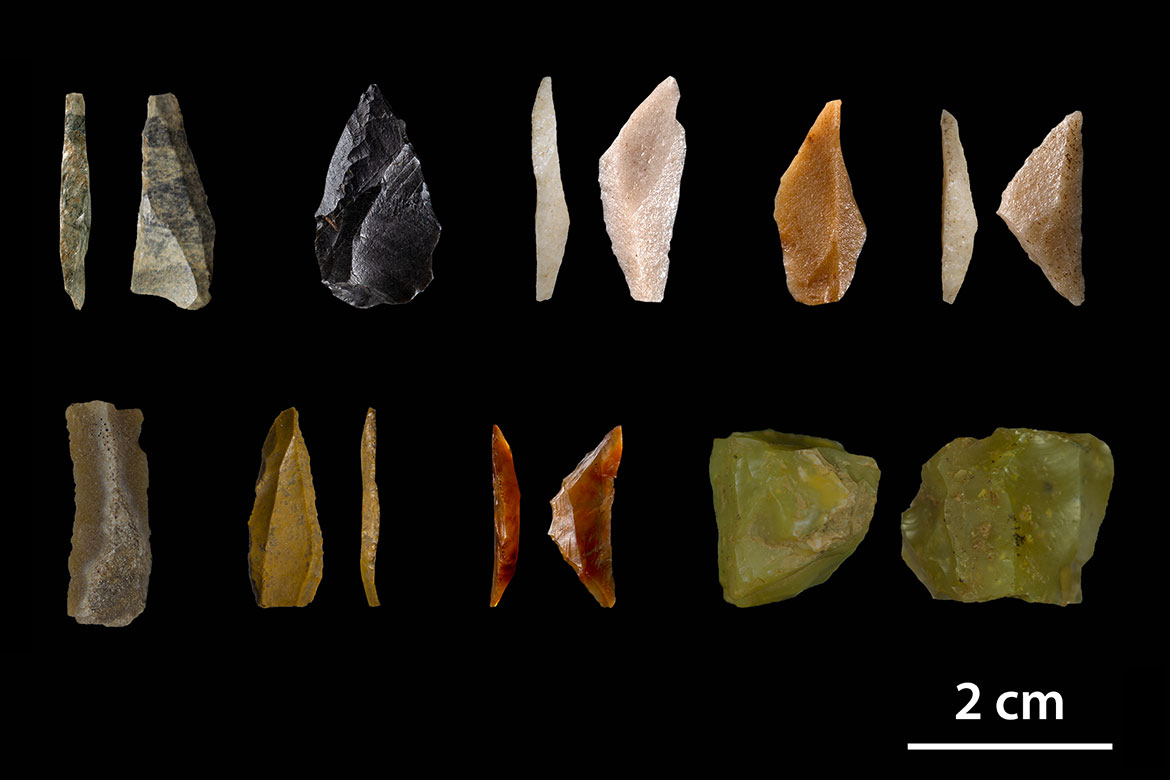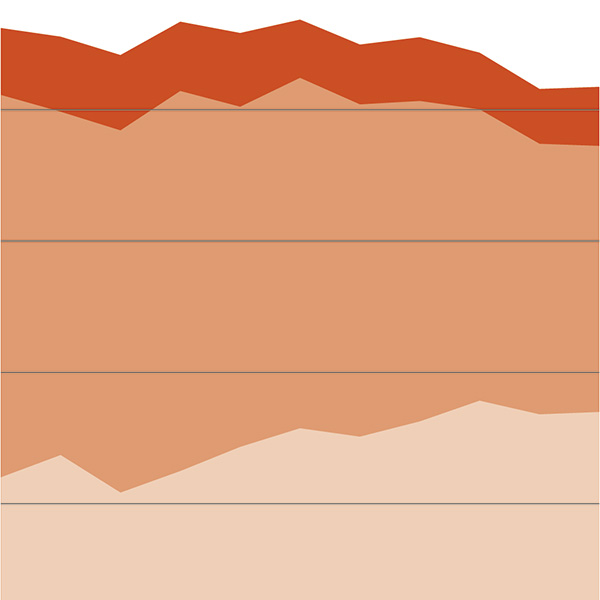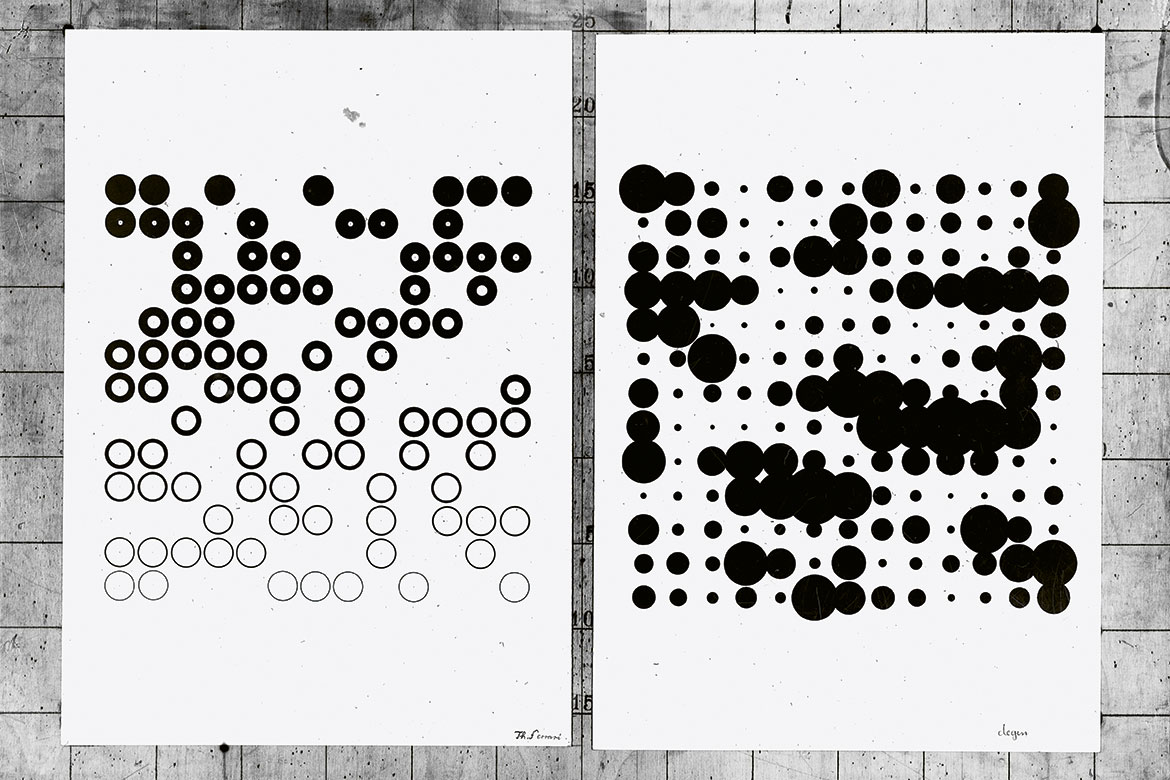ARCHAEOLOGY
Mass production in the Stone Age
During the Mesolithic, a workshop in what is nowadays Central Germany produced thousands of stone tools. The raw material came from far away and displays a variety of different colours.
The ‘Feuersteinacker’ in the Vogelsberg region (in today’s federal state of Hesse) was one of the largest Mesolithic workshops in Germany. Around 11,000 years ago, our ancestors used the site for the serial production of stone tools. In a research project conducted in cooperation with the University of Aarhus in Denmark, the Swiss archaeologist Thomas Hess has been able to identify for the first time where the different raw materials came from.

The material for these stone tools was transported to the ‘Feuersteinacker’ in Central Germany from far away. | Photo: Thomas Hess
A microscopic analysis of more than 8,000 stone tools has provided new insights into the life of Early Mesolithic groups. The raw material includes a variety of different rock types. Instead of being processed where they were quarried, these rocks were transported to this site over distances of up to 150 km before being transformed into microliths (small, often geometrical inserts for arrows). Besides silicified sandstone, people also used siliceous shale, Cretaceous flint, Jurassic chert, chalcedony and petrified wood. “The range of colours is particularly diverse”, says Hess, “and it’s possible that these materials didn’t just have a functional but also a symbolic meaning”.
The Vogelsberg is the largest volcanic structure in Central Europe. Several rivers emerge in the area and served as important landmarks during prehistoric times. According to the experts, the isolated ‘Feuersteinacker’ was both an important transportation hub and a gathering place during the Mesolithic.




